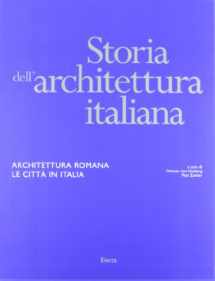
Storia Dell'architettura Italiana: Architettura Romana Le Citta in Italia (Italian Edition)
ISBN-13:
9788837084110
ISBN-10:
8837084110
Edition:
Illustrated
Author:
Paul Zanker, Henner von Hesberh
Publication date:
2012
Publisher:
Mondadori Electa
Format:
Hardcover
441 pages
FREE US shipping
Book details
ISBN-13:
9788837084110
ISBN-10:
8837084110
Edition:
Illustrated
Author:
Paul Zanker, Henner von Hesberh
Publication date:
2012
Publisher:
Mondadori Electa
Format:
Hardcover
441 pages
Summary
Storia Dell'architettura Italiana: Architettura Romana Le Citta in Italia (Italian Edition) (ISBN-13: 9788837084110 and ISBN-10: 8837084110), written by authors
Paul Zanker, Henner von Hesberh, was published by Mondadori Electa in 2012.
With an overall rating of 3.6 stars, it's a notable title among other
books. You can easily purchase or rent Storia Dell'architettura Italiana: Architettura Romana Le Citta in Italia (Italian Edition) (Hardcover) from BooksRun,
along with many other new and used
books
and textbooks.
And, if you're looking to sell your copy, our current buyback offer is $0.3.
Description
Il volume prosegue gli studi raccolti nella precedente pubblicazione curata dai noti archeologi tedeschi Paul Zanker e Henner von Hesberg dedicata ai grandi monumenti dell'architettura romana. Il nuovo titolo documenta sviluppo, storia e trasformazione delle antiche città romane in Italia. La città di Roma e le colonie da essa fondate si distinguono notevolmente. A partire dal VII sec. a.C. un lungo processo aveva portato alla crescita di Roma, divenuta poi capitale di un Impero che si estendeva su tutto il Mediterraneo. Resti di strutture arcaiche restavano affiancati a strade pianificate con case a più piani, templi antichi più volte restaurati a impianti templari ellenistici e magnifici fori imperiali. Le città coloniali fondate da Roma avevano invece un aspetto totalmente diverso. Spesso si trovavano lungo o su importanti assi stradali che portavano direttamente al tempio principale, il Capitolium, e al Foro. Un sistema viario ortogonale strutturava l'intera area urbana. A partire dal tardo I sec. a.C. queste città si svilupparono oltre l'impianto originario per offrire spazio sufficiente ad ospitare edifici eccellenti come teatri, anfiteatri, nuove aree abitative e non da ultimo, edifici termali.


We would LOVE it if you could help us and other readers by reviewing the book
Book review

Congratulations! We have received your book review.
{user}
{createdAt}
by {truncated_author}


